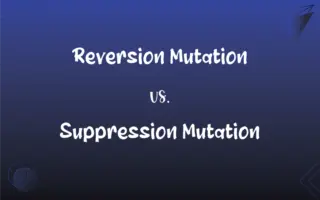Coordinating Conjunction vs. Subordinating Conjunction: What's the Difference?
Edited by Aimie Carlson || By Harlon Moss || Published on March 7, 2024
Coordinating conjunctions join grammatically equal elements; subordinating conjunctions connect a dependent clause to an independent clause.

Key Differences
Coordinating conjunctions, such as 'and', 'but', and 'or', connect words, phrases, or clauses of equal grammatical importance. Subordinating conjunctions like 'because', 'although', and 'if', however, link a dependent clause to an independent clause, establishing a relationship of dependence.
In sentences using coordinating conjunctions, each element has equal grammatical weight. Conversely, subordinating conjunctions create a hierarchy, where the independent clause is more significant than the dependent clause.
Coordinating conjunctions are used to add, contrast, or give alternatives without changing the independent status of the elements they connect. Subordinating conjunctions, in contrast, indicate a cause-and-effect, time, condition, or contrast relationship between an independent and a dependent clause.
Sentences with coordinating conjunctions can often be split into two independent sentences without losing meaning. Sentences with subordinating conjunctions, however, rely on the connection between the clauses for complete meaning.
Coordinating conjunctions are straightforward in terms of punctuation, typically involving a comma when connecting clauses. Subordinating conjunctions involve more complex punctuation; commas are used depending on the sentence structure and emphasis.
ADVERTISEMENT
Comparison Chart
Grammatical Function
Joins elements of equal importance
Connects a dependent clause to an independent clause
Sentence Structure
Creates compound sentences
Creates complex sentences
Relationship Indicated
Addition, contrast, choice
Cause-and-effect, condition, time, contrast
Sentence Splitting
Can be split into independent sentences
Cannot be split without losing meaning
Punctuation
Often uses a comma between clauses
Punctuation varies based on sentence structure
ADVERTISEMENT
Coordinating Conjunction and Subordinating Conjunction Definitions
Coordinating Conjunction
A coordinating conjunction joins words, phrases, or clauses of equal grammatical rank.
She bought apples and oranges.
Subordinating Conjunction
Subordinating conjunctions create complex sentences with one independent and one dependent clause.
She sang beautifully, even though she was nervous.
Coordinating Conjunction
Coordinating conjunctions give a sense of equality and partnership between sentence elements.
The movie was not only entertaining but also informative.
Subordinating Conjunction
Subordinating conjunctions are crucial for showing the relationship between different parts of a sentence.
As soon as the bell rang, the students left the classroom.
Coordinating Conjunction
Coordinating conjunctions are used to link individual words, independent clauses, or groups of words.
He likes to play guitar, but he loves singing more.
Subordinating Conjunction
A subordinating conjunction can show cause, contrast, condition, or time.
If you study hard, you will pass the exam.
Coordinating Conjunction
A coordinating conjunction adds symmetry and balance to sentence structures.
She is talented and hardworking.
Subordinating Conjunction
Subordinating conjunctions introduce a dependent clause, indicating its relation to the main clause.
Although he was tired, he finished his work.
Coordinating Conjunction
Coordinating conjunctions often connect items in a list.
They visited Paris, Rome, or Madrid for their vacation.
Subordinating Conjunction
A subordinating conjunction joins a dependent clause to an independent clause.
He stayed home because it was raining.
FAQs
Can coordinating conjunctions create complex sentences?
No, coordinating conjunctions typically create compound sentences.
Do coordinating conjunctions change the independent status of clauses?
No, they connect clauses while maintaining their independent status.
How do subordinating conjunctions indicate time?
They use words like 'before', 'after', or 'when' to relate actions in time.
What is a coordinating conjunction?
A coordinating conjunction joins elements of equal grammatical importance.
Are coordinating conjunctions used in lists?
Yes, they can connect items in a list.
How do subordinating conjunctions affect sentence structure?
They create complex sentences with a clear dependency between clauses.
Are coordinating conjunctions used in complex sentences?
No, they are typically found in compound sentences.
What is a subordinating conjunction?
A subordinating conjunction connects a dependent clause to an independent clause.
Do subordinating conjunctions always come at the beginning of a sentence?
No, they can appear in the middle, often introducing a dependent clause.
Can a sentence have both a coordinating and a subordinating conjunction?
Yes, it's possible in complex-compound sentences.
Do subordinating conjunctions introduce main clauses?
No, they introduce dependent clauses.
How do coordinating conjunctions affect rhythm and flow in writing?
They provide balance and symmetry, enhancing readability.
Can a coordinating conjunction start a sentence?
While traditionally discouraged, it can occur for stylistic reasons.
Can subordinating conjunctions show contrast?
Yes, with words like 'although', 'though', or 'whereas'.
Can subordinating conjunctions stand alone?
No, they must be part of a clause connected to an independent clause.
Is the use of commas always necessary with coordinating conjunctions?
It depends on the sentence structure, but often a comma is used before the conjunction in compound sentences.
How do subordinating conjunctions indicate cause and effect?
Words like 'because', 'since', or 'as' show cause-and-effect relationships.
Are subordinating conjunctions crucial for complex sentence construction?
Yes, they are essential for creating complex sentences with dependent and independent clauses.
What are examples of coordinating conjunctions?
'And', 'but', 'or', 'nor', 'for', 'yet', and 'so' are examples.
How many coordinating conjunctions are there in English?
There are seven main coordinating conjunctions.
About Author
Written by
Harlon MossHarlon is a seasoned quality moderator and accomplished content writer for Difference Wiki. An alumnus of the prestigious University of California, he earned his degree in Computer Science. Leveraging his academic background, Harlon brings a meticulous and informed perspective to his work, ensuring content accuracy and excellence.
Edited by
Aimie CarlsonAimie Carlson, holding a master's degree in English literature, is a fervent English language enthusiast. She lends her writing talents to Difference Wiki, a prominent website that specializes in comparisons, offering readers insightful analyses that both captivate and inform.






































































